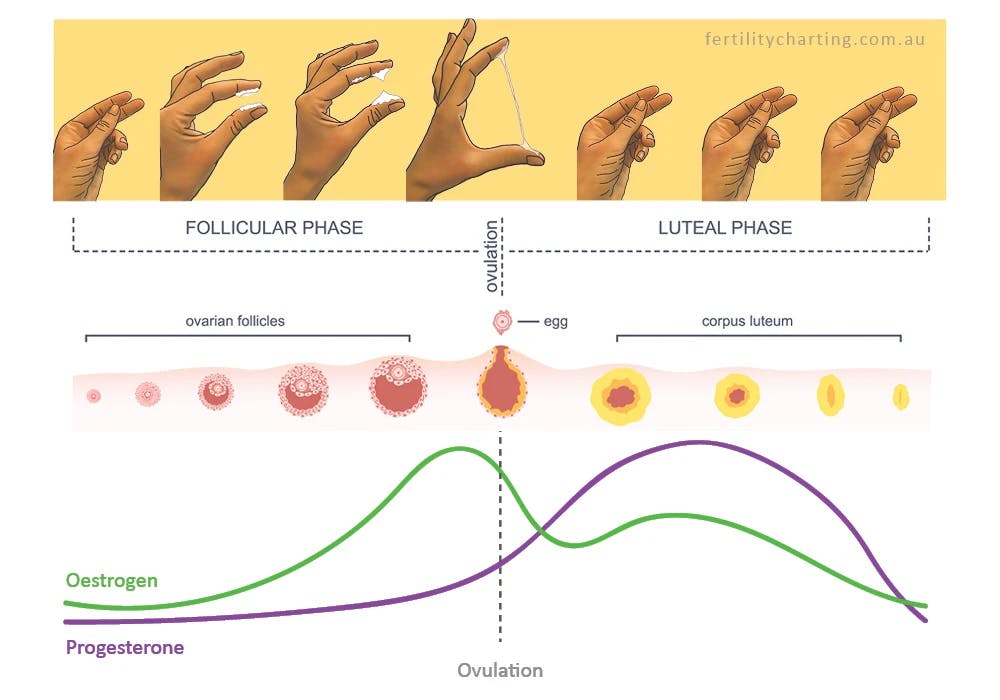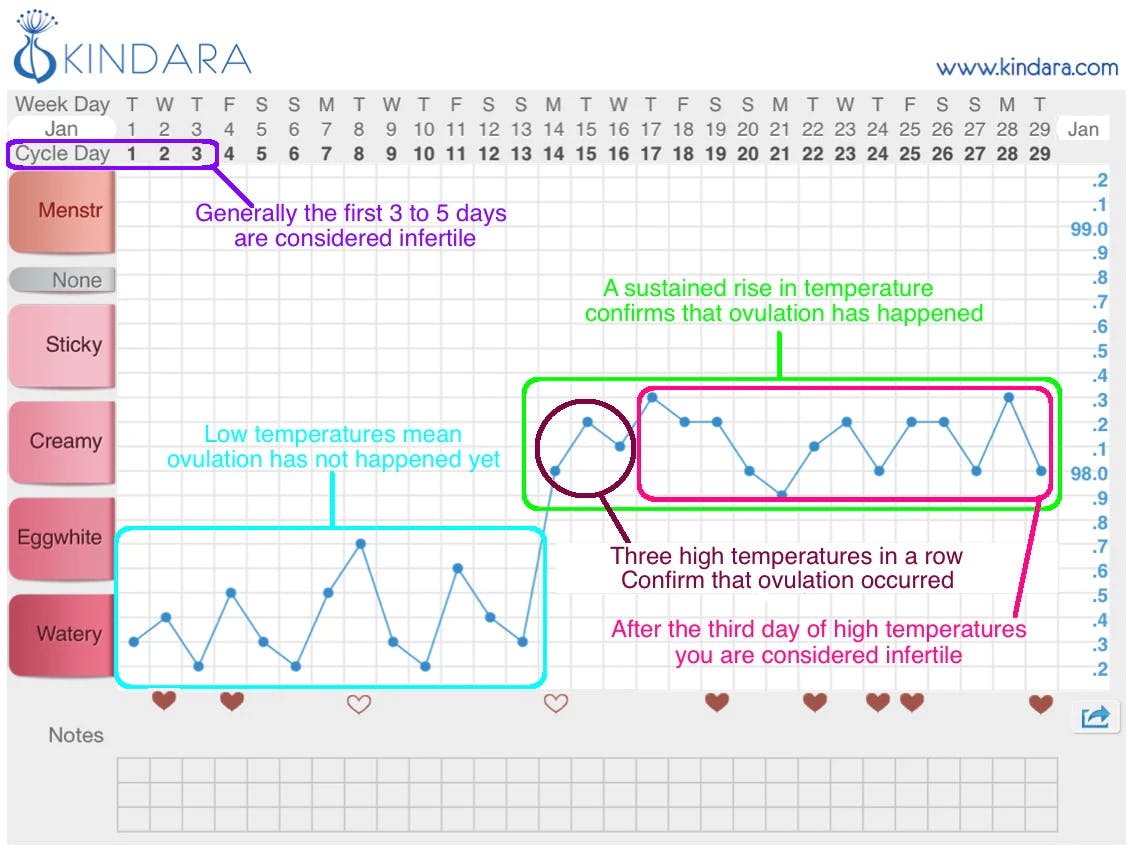Your Beginner's Guide To The Fertility Awareness Method
There are a lot of misconceptions about the fertility awareness method (FAM) and fertility awareness-based methods in general (FABM). Because it’s hormone-free, it must not work that well, right? Also, isn’t FAM complicated and for hippies who don’t know anything about birth control?

As a FAM user myself, I’ve heard it all. I’ve even had doctors discourage me from looking into it, though I’m glad I did. FAM isn’t popular in the mainstream because for one, it’s free (short of the cost of a basal body thermometer) and because it doesn’t garner profits for the pharmaceutical industry. Also, FAM is for every woman, whether they’re trying to avoid pregnancy or get pregnant. When used effectively, it has a 99.6% effectiveness rate at preventing pregnancy. FAM is also about a lot more than contraception – it’s about learning to interpret what your body is telling you, rather than ignore or cover up your monthly biological process. Here’s your beginner’s guide to the fertility awareness method.
Fertility Awareness Method Basics
Many who aren’t in the know might inaccurately assume that FAM relies on guesswork, approximations, or estimates. But that’s not correct. Essentially, FAM uses the monthly cycle, specifically when ovulation occurs, to learn when exactly our most fertile window happens within that cycle.
FAM uses a number of methods to measure ovulation: the presence or absence of cervical mucus, taking basal body (also known as waking) temperature, and charting both of these on a daily basis to recognize patterns. Seeing the patterns in our cycle is absolutely essential to FAM’s success, regardless of the goal we’re aiming for. For this reason, it’s imperative that you chart your cycles for at least three months before using FAM for contraceptive purposes. And we strongly recommend finding a coach or teacher who can help you or answer your questions. Once you know your cycle like the back of your hand, then you can really begin to use it for your own advantage, rather than have it work against you.
The first piece of the puzzle is our cervical mucus. Even if you’ve never dabbled in FAM before, you’ve probably noticed cervical fluid or mucus in your underwear at different points throughout your cycle. Cervical mucus is actually pretty fascinating because it’s our reproductive system’s way of communicating whether we’re fertile or not fertile.

Image Source: Fertility Charting
FAM really starts by paying attention to our cervical mucus (CM). Is it slippery, sticky, or stretchy? Is it egg white clear or creamy or is there no mucus at all? All of these point us to where we are in our cycle. When ovulation occurs, our CM is stretchy, thin, and clear (like egg whites) – all of which makes it easier for sperm to enter the cervix, go up the uterus, and find an egg released by our ovaries to fertilize.
Noting CM is easy. You can grab a blank notebook, piece of paper, or even document your CM day by day in a planner or agenda. Also, don’t check your CM for at least a few hours after sex, as it’s easy to confuse with arousal fluid.
Next, we need to measure our basal body or waking temperature (BBT). It’s important to know that we can’t do this with any old thermometer. We need a specifically designated basal body thermometer, which is more sensitive than a normal one. This next part is crucial to the process. To ensure the most accurate reading possible, we need to be taking our temperature first thing when we wake up, before we even get out of bed or use the bathroom. It’s also best, if possible, to take our BBT at the same time every day if we can.
Why do we need to take our temperature? The body’s temperature increases when ovulation occurs, and usually stays elevated before returning to normal. For this reason, we need the final piece of FAM: charting.
You can chart with a period-tracking app, like Clue, or even in a notebook or on a calendar. Personally, I recommend tracking on paper as a beginner. You get a really good visual of your peak fertile time, and it’s nice to have physical copies of different months and cycles to compare against each other. Start on day 1 of your cycle (the first day of your period), and it’s really that simple. You can also find blank templates online to use. Here’s what a sample chart looks like:

Image Source: Nicole Jardim
Using FAM To Conceive
FAM can be extremely helpful if you’re trying to conceive. With your newly acquired knowledge on your cycles, you’ll have a better idea and a better grasp of your peak fertile days and about when you ovulate. On those days, you can engage in unprotected sex and note it on your chart. (Many experts recommend having sex every other day while you’re having fertile mucus.) From cycle to cycle, you can see how many times or how often you had unprotected sex, and begin your conception journey. When you have a better grasp of your cycle, however long or short it may be, you also can figure out what’s working for you and what isn’t fertility-wise. You may want to start taking supplements, exercising more, or prioritizing rest (all of which you can note on a chart), and FAM can help you do that.
Charting can also reveal many things that may be negatively impacting your fertility. If you’re not seeing the temperature shift, that could indicate you’re not actually ovulating. If your temperature doesn’t stay raised after ovulation or for not enough days, if could indicate a progesterone deficiency. The signs your body gives you through charting can give you direction on what to discuss with your doctor and what tests to run to optimize your fertility and chances of conception.
Using Fam To Avoid Pregnancy
Having unprotected sex is easy, but what if we want to use FAM to avoid pregnancy? Once we know our cycles and when our five to six fertile days are, and bearing in mind that sperm can live for up to five days, there’s no stopping us. Using FAM as contraception is really as simple as avoiding sex on our fertile days and using a business-as-usual approach on our other, non-fertile days. Whether we rely on barrier methods or abstinence, it’s important for us to know that having sex within the fertile window, even if it’s not the day of ovulation, still opens us up to the chance of getting pregnant.
Again, it’s highly recommended that you have at least a few months or more under your belt before you start using it for contraceptive purposes. Using FAM as contraception is really as good as our charting skills are. If we’re taking our temperature every day and noting our cervical mucus (and ideally have been for months) and we know when to expect ovulation or if ovulation has already passed, we have no reason to believe pregnancy is on the horizon. FAM is really only as good as how invested you are in it, especially when you’re using it to avoid pregnancy.
It should also be noted that getting your spouse on board is really important. Though they can’t do the work for you, they should know how you’re using it and why you’re using it as contraception. Men can and should understand why so many women are dissatisfied with hormonal birth control, as well as the myriad of benefits FAM offers women, though we often exclude them from these conversations. Having a support person in your corner – especially if it’s the person you share a sex life with – is always a plus.
Closing Thoughts
FAM doesn’t come in a box, and you don’t have to pick it up from a pharmacy. Short the cost of a thermometer and maybe a pen and paper, that’s all you really need. FAM is backed by science, and it’s for every woman, regardless of how regular or irregular her cycles are. In addition to being free and effective, it’s also empowering. Instead of relying on hormones, pills, patches, or a piece of copper, you’re relying on your body’s signals and messages, all of which hormonal birth control can mask. FAM allows women to embrace their bodies as they were meant to be: free and unencumbered by artificial this or synthetic that. Now that you’ve had a crash course, what’s stopping you? Happy charting!
Don’t miss anything! Sign up for our weekly newsletter and get curated content weekly!